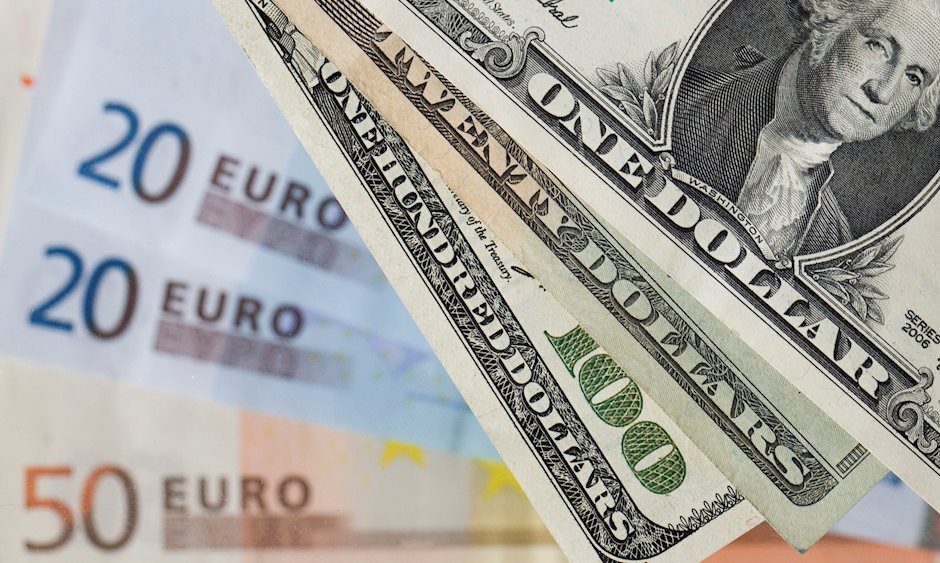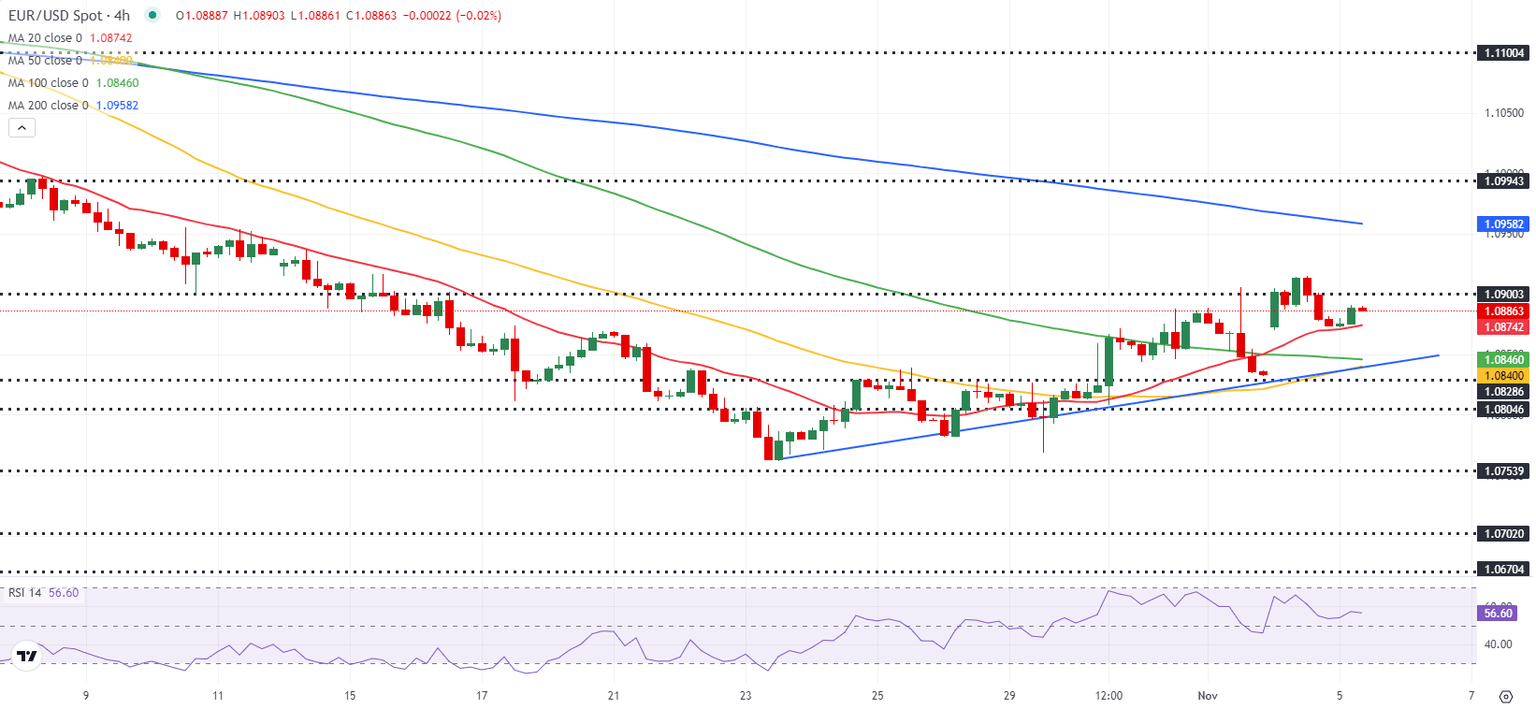EUR/USD Forecast: Euro holds above key level as markets turn cautious
- EUR/USD fluctuates in a narrow range below 1.0900 on Tuesday.
- Markets turn anxious on the day of the US presidential election.
- The pair could come under renewed bearish pressure if 1.0870 support fails.

After opening the week with a big bullish gap, EUR/USD climbed above 1.0900 but lost its traction later in the American session on Monday. The pair fluctuates in a narrow channel below 1.0900 in the European morning on Tuesday as investors move to the sidelines on the day of the US presidential election.
The selling pressure surrounding the US Dollar fuelled EUR/USD's rally on Monday. In the second half of the day, however, safe-haven flows dominated the action in financial markets and caused the pair to retreat.
The US economic calendar will feature the ISM Services PMI report for October. Nevertheless, market participants are unlikely to take large positions based on this data and await the outcome of the US election, which remains a very tight race according to the latest polls.
The TIPP poll has Donald Trump and Kamala Harris tied at 48 points in nationwide, the Ipsos poll has Harris leading by two points, 50 vs 48, and the Atlas Intel poll has Trump leading by one, 50 vs 49, as per RealClearPolling. In some swing states, such as Arizona and North Carolina, Trump seems to be holding on to a marginal lead, while Harris seems to have closed the gap in others, such as Georgia, Nevada and Pennsylvania.
If the vote count in those swing states remain close, it might be a few days before a winner is called.
EUR/USD Technical Analysis
The Relative Strength Index (RSI) indicator on the 4-hour chart stays above 50 and EUR/USD trades above the 200-day Simple Moving Average (SMA), currently located at 1.0870, reflecting sellers' hesitancy.
EUR/USD could face interim resistance at 1.0900 (round level). Once the pair clears this level, it could target 1.0950 (100-day SMA) and 1.1000 (round level, static level, 50-day SMA) next. On the downside, On the downside, a daily close below 1.0870 could open the door for an extended slide toward 1.0800 (round level, static level).
Euro FAQs
The Euro is the currency for the 19 European Union countries that belong to the Eurozone. It is the second most heavily traded currency in the world behind the US Dollar. In 2022, it accounted for 31% of all foreign exchange transactions, with an average daily turnover of over $2.2 trillion a day. EUR/USD is the most heavily traded currency pair in the world, accounting for an estimated 30% off all transactions, followed by EUR/JPY (4%), EUR/GBP (3%) and EUR/AUD (2%).
The European Central Bank (ECB) in Frankfurt, Germany, is the reserve bank for the Eurozone. The ECB sets interest rates and manages monetary policy. The ECB’s primary mandate is to maintain price stability, which means either controlling inflation or stimulating growth. Its primary tool is the raising or lowering of interest rates. Relatively high interest rates – or the expectation of higher rates – will usually benefit the Euro and vice versa. The ECB Governing Council makes monetary policy decisions at meetings held eight times a year. Decisions are made by heads of the Eurozone national banks and six permanent members, including the President of the ECB, Christine Lagarde.
Eurozone inflation data, measured by the Harmonized Index of Consumer Prices (HICP), is an important econometric for the Euro. If inflation rises more than expected, especially if above the ECB’s 2% target, it obliges the ECB to raise interest rates to bring it back under control. Relatively high interest rates compared to its counterparts will usually benefit the Euro, as it makes the region more attractive as a place for global investors to park their money.
Data releases gauge the health of the economy and can impact on the Euro. Indicators such as GDP, Manufacturing and Services PMIs, employment, and consumer sentiment surveys can all influence the direction of the single currency. A strong economy is good for the Euro. Not only does it attract more foreign investment but it may encourage the ECB to put up interest rates, which will directly strengthen the Euro. Otherwise, if economic data is weak, the Euro is likely to fall. Economic data for the four largest economies in the euro area (Germany, France, Italy and Spain) are especially significant, as they account for 75% of the Eurozone’s economy.
Another significant data release for the Euro is the Trade Balance. This indicator measures the difference between what a country earns from its exports and what it spends on imports over a given period. If a country produces highly sought after exports then its currency will gain in value purely from the extra demand created from foreign buyers seeking to purchase these goods. Therefore, a positive net Trade Balance strengthens a currency and vice versa for a negative balance.
Premium
You have reached your limit of 3 free articles for this month.
Start your subscription and get access to all our original articles.
Author

Eren Sengezer
FXStreet
As an economist at heart, Eren Sengezer specializes in the assessment of the short-term and long-term impacts of macroeconomic data, central bank policies and political developments on financial assets.



















